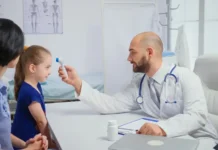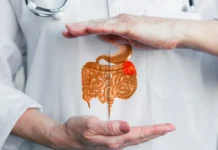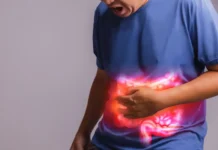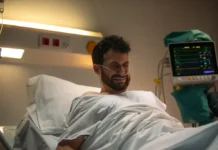Rare Genetic Disorder Affects Ectoderm-Derived Structures
Ablepharon-Macrostomia syndrome (AMS) is a rare genetic condition. It affects the eyelids, which may be missing or not fully developed (ablepharon or microblepharon). Additionally, it causes the mouth to be unusually big (macrostomia).
It primarily affects the skull and face but can also impact other body parts such as the skin, fingers, and genitals. AMS is inherited in an autosomal dominant manner due to mutations in the TWIST2 gene.
Amniotic Band Syndrome: Signs and Symptoms
AMS is a rare congenital disorder caused by entanglements with fibrous amniotic bands during fetal development. It is characterized by a wide range of physical abnormalities, including:
Craniofacial features:
- Wide nasal bridge
- Long philtrum (groove between the nose and lips)
- Flared nostrils
- Thick-flared alae nasi (edges of the nostrils)
- Cheek pads (bulging cheeks superolateral to the corners of the mouth)
- No zygomatic arches, which are bony structures from the eyes to the skull, are found.
- Small chin
- Low-set ears with attached earlobes
Eye abnormalities:
- Absence or severe underdevelopment of eyelids
- Down-turned lower eyelids
- A wide, fish-like mouth that may be fused at the corners (ectropion)
- Exposure of the inner mucous membranes (lagophthalmos)
- Dry eyes
- Corneal clouding
- Light sensitivity (photophobia)
- Vision loss
Other abnormalities:
- Ambiguous genitalia
- Displaced and/or atypically small penis (micropenis)
- Absent scrotum
- Undescended testicles
- Alopecia (hair loss)
- Thin, sparse hair
- Redundant and wrinkled skin
- Loose skin around the hands
- Tight skin over the finger joints
- Syndactyly (webbed fingers)
- Camptodactyly (permanently flexed fingers)
- Lack of tear production (alacrimia),
- Recurrent involuntary eye movements (nystagmus),
- Uneven inward eye misalignment (strabismus) and the
- Complete or partial detachment of the retina from the choroid layer (detached retina).
- Abdominal hernia
Physical growth is generally undisturbed in children with AMS, but cognitive development may be delayed. The severity of signs and symptoms can vary from person to person.
TWIST2 gene mutations cause Ablepharon-Macrostomia Syndrome (AMS).
Causes
Ablepharon-Macrostomia syndrome (AMS) is caused by mutations in the TWIST2 gene. TWIST2 is a transcription factor that plays a role in cell development and differentiation. Mutations in TWIST2 can disrupt these processes, leading to the characteristic features of AMS.
Current research suggests that the substitution of lysine for the wild-type amino acid at residue 75 of TWIST2 is a significant genetic cause of AMS. This mutation alters the DNA-binding activity of TWIST2, potentially explaining the disorder’s phenotypes.
AMS is inherited in an autosomal dominant manner. This means an affected individual needs only one copy of the mutant TWIST2 gene to express the disease. The mutant gene can be inherited from either a parent or result from a new mutation. There is a 50% chance for each pregnancy that the mutant gene will be transmitted from a parent who carries it to their child.
Ablepharon-Macrostomia Syndrome (AMS) and TWIST2
Affected Populations
From 1977 to 2020, only 16 cases of AMS were recorded. This indicates a global prevalence of less than 1 case per million people. There is no apparent sex or ethnic disparity, and males and females present with similar signs and symptoms.
Disorders with Similar Symptoms
The TWIST2 gene can cause disorders such as Barber-Say syndrome (BSS) and Setleis syndrome. BSS and AMS are similar but have some differences. BSS is also known as focal facial dermal dysplasia 3. These differences include excessive hair growth, less severe eye problems, narrow ear canals, and normal hands and genitalia in BSS.
Setleis syndrome is similar to AMS and BSS but less severe. It can be identified by inwardly folding eyelids, narrow temples, and no cheek pads.
The Role of TWIST2 in Ablepharon-Macrostomia Syndrome
The mesenchyme is an embryonic tissue that could change into many unique tissues, including blood, cartilage, and membranes. During embryonic development, TWIST2 is particularly expressed within the craniofacial area, and chondrogenesis is the system of cartilage formation.
TWIST2 prevents the untimely maturation of chondrogenic cells and osteoblasts, the cells that form cartilage and bone, respectively. The dominant mutation in TWIST2 in AMS patients leads to the premature maturation of these cells. This leads to the primary craniofacial deformities seen in AMS.
Diagnosis of Ablepharon Macrostomia Syndrome
Ablepharon macrostomia syndrome (AMS) is a rare genetic disorder that can be diagnosed at birth. AMS causes missing or small eyelids, a big mouth, and problems with the face, ears, hands, feet, skin, and genitals.
A team of specialists, including pediatricians, ophthalmologists, gastroenterologists, dermatologists, and urologists, typically work together to confirm a diagnosis of AMS and assess treatment options.
Clinical Evaluation and Testing
The physical examination and identification of characteristic findings are used to clinically diagnose AMS. However, molecular genetic testing for mutations inside the TWIST2 gene may be used to confirm the diagnosis.
Other specialized tests that can assist in diagnosing AMS include:
- CT scans are used to see if the cheekbone is missing and if the upper and lower jawbones are joined strangely.
- Ophthalmological examination to assess eyelid traits, detect any extra or related eye abnormalities, and advise suitable preventive steps or treatment.
Children with Apert Syndrome

What is Apert syndrome?
Apert syndrome is a rare genetic condition that profoundly impacts the development of the skull, limbs, and nervous system. A change in the FGFR2 gene causes it. This gene is important for cell growth and development.
Fetal Surgery
Fetal surgery, a highly intricate and risky procedure, involves surgical interventions on a fetus while still in the womb. This specialized approach can be employed to address certain congenital defects, including Apert syndrome.
The Nervous System
The nervous system, a complex network of nerves and cells, governs all bodily functions, encompassing cognition, mobility, and sensation. Apert syndrome may give rise to various neurological challenges, such as seizures, developmental delays, and intellectual disabilities.
The Amniotic Sac
The amniotic sac is a fluid-filled protective envelope encasing the developing fetus within the womb. Apert syndrome can cause the amniotic sac to break early, increasing the chance of problems like early birth and infection.
Challenges at Higher Altitudes
Children with Apert syndrome may encounter difficulties breathing at elevated altitudes. This predicament arises from narrower airways compared to their peers.
Birth Defects
Birth defects denote anomalies present at birth. Apert syndrome can yield various birth defects, notably:
- Craniosynostosis: premature fusion of skull bones
- Syndactyly: fusion of fingers or toes
- Midface hypoplasia: underdevelopment of the middle facial area
These anomalies can affect dexterity and everyday tasks.
Risk Factors
Apert syndrome is more common in children whose parents do not have it. However, there is a slightly higher chance of having Apert syndrome if there is a family history.
Breathing Challenges
Children with Apert syndrome often have trouble breathing because their airways are narrower than usual.
Reconstructive Surgery
Children with Apert syndrome often undergo reconstructive surgery to rectify craniosynostosis, syndactyly, and midface hypoplasia, thus enhancing their physical appearance and functionality.
Long-Term Outlook
The long-term prognosis for children with Apert syndrome is generally positive. However, some children may grapple with persistent health issues, including hearing loss, visual impairments, and respiratory problems.
Medical Condition
Apert syndrome is a medically significant condition affecting the development of the skull, limbs, and nervous system. It is considered rare but can lead to severe consequences.
Life-Threatening Scenarios
In certain instances, Apert syndrome can pose life-threatening risks, chiefly related to respiratory complications.
Symptoms of Apert Syndrome in Children
Apert syndrome is an unprecedented genetic circumstance that triggers craniosynostosis, a situation characterized by the untimely closure of sutures among the cranium bones. This untimely fusion can result in a strange skull form and affect the growth of the face, fingers, and feet.
Kids with Apert syndrome can have a range of symptoms, but some common signs include varying levels of severity.
- Craniosynostosis: This offers an elongated, slender head with a high forehead and prominent brow ridges.
- Midface hypoplasia: a terrific sunken midface with underdeveloped cheekbones and a top jaw
- Syndactyly: the fusion of palms and feet
- Respiratory Problems: Narrowed airways can cause respiration difficulties.
- Hearing Loss: Conductive listening loss might also arise due to malformed ear canals or center ear bones.
- Vision Problems: These can include bulging eyes (exophthalmos) and strabismus (misaligned eyes), leading to vision impairments.
In addition to these bodily symptoms, youngsters with Apert syndrome may also experience developmental delays and intellectual disabilities.
Apert Syndrome Treatment
Nowadays, the treatment for Apert syndrome involves surgeries during the early stages of a baby’s life. This allows one to maintain vision and decreases visual headaches like corneal clouding (opacification).
People with Ablepharon-Macrostomia Syndrome (AMS) can use eye drops to help with dry eyes and relieve symptoms. Additional surgeries may be needed later on to improve function and appearance.
For severe ectropion and underdeveloped eyelids, skin flaps can be transferred to the lid region to help close the eyes. However, there is a risk of lagophthalmos, which is the inability to completely close the eyes.
Surgical procedures like local flaps, face-lifts, forehead lifting, Botox injections, fat grafting, orthognathic surgery, and nasal reconstruction with rib cartilage grafts may also be considered for correcting fingers, skin, or ears. However, they will be riskier for younger human beings, considering that craniofacial growth may be impaired.
Young people with Noonan syndrome need helpful resources as they navigate societal pressure regarding their bodies. These resources should be provided as they grow up and learn to cope with these challenges. A knowledgeable healthcare group can handle all medical needs and the emotional aspects of the condition.
AMS patients have stated super success with corrective surgical operations. They emphasize the significance of constructing arrogance and having chronic assistance from their family contributors. Despite the demanding situations posed by using AMS, sufferers are aware that it is especially outside and does not affect their highbrow and physical abilities or their capability to pursue their targets.
People with AMS and their families should receive genetic counseling to understand the genetic and familial aspects of AMS. This can offer psychosocial guidance and assist them in dealing with the circumstances.
Primary Treatment for Ablepharon-Macrostomia Syndrome
The main treatment helps with immediate symptoms by providing eye lubrication to reduce pain and dryness. Antibiotics can also be prescribed to prevent infections.
Surgical measures can be taken to correct the shortage of eyelids through reconstructive surgical procedures. Surgery to correct malformations of the mouth, ears, genitals, hands, and skin can also be done as necessary.
Macrostomia, the huge, fish-like mouth, may be corrected with the aid of a maxillofacial health practitioner. The skin can be treated with creams to relieve dryness and coarseness. In certain instances, botulinum-toxin pores and skin grafts have been used to improve the overall appearance. It is highly advised for patients to seek help from child psychologists throughout the entire treatment process.
Surgical and Non-Surgical Treatments for Children with Apert Syndrome
Children recognized with Apert syndrome commonly show off a variety of bodily symptoms, which include craniosynostosis, midface hypoplasia, syndactyly, respiratory demanding situations, listening loss, and vision impairments. The severity of those symptoms varies from one infant to another.
Different treatments can help children with Apert syndrome manage symptoms and improve their quality of life. These remedies encompass:
- Fetal Surgery for Apert Syndrome: This method aims to correct craniosynostosis and midface hypoplasia before delivery, ultimately improving the kid’s appearance and postnatal respiratory
- Craniosynostosis Surgery for Apert Syndrome: Usually done in the first six months of life, this surgery separates the fused sutures, allowing the skull to grow properly. This can enhance the kid’s facial appearance and decrease the risk of developmental delays.
- Syndactyly Surgery for Apert Syndrome: Done between ages 1 and 2, this procedure separates joined hands and feet, enhancing their features and looks.
- Midface Advancement Surgery for Apert Syndrome: This surgical procedure corrects midface hypoplasia by repositioning the upper jaw forward and widening the cheekbones.
- Respiratory Problem Management for Apert Syndrome: Doctors can use surgery to widen airways, or they can use masks and tubes to help with breathing problems.
- Hearing Loss Treatment for Apert Syndrome: Hearing aids or surgery can fix ear canal or middle ear bone problems.
- Vision Problem Management for Apert Syndrome: Glasses, contacts, or surgery can help with vision problems like exophthalmos or strabismus.
Ablepharon-Macrostomia Syndrome: Prognosis and Research
Prognosis:
Although AMS presently has no therapy, sufferers can take advantage of treatment plans supplied by doctors. These plans can help improve their normal exceptional lifestyles, bodily appearance, and overall health. While physical appearance cannot be restored every day, sufferers with AMS have a normal life expectancy.
Research:
Current research on AMS is focused on both its underlying causes and surgical treatment methods. A study in Tokyo is examining the involvement of other TWIST genes in the development of AMS. Specifically, the study focuses on TWIST1 and the amino acid substitution required for gene mutation. TWIST1 mutations are believed to lead to craniosynostosis and ablepharon.
Clinical research is focused on different surgical techniques for treating the ablepharon aspect of AMS. The primary goal of this research is to identify the most effective methods for patients without being unnecessarily complex. A study in Brazil and Peru discovered that skin grafts are an effective treatment for microblepharon in AMS patients. This treatment does not require complex surgery.
Genetic Syndromes and Facial Features
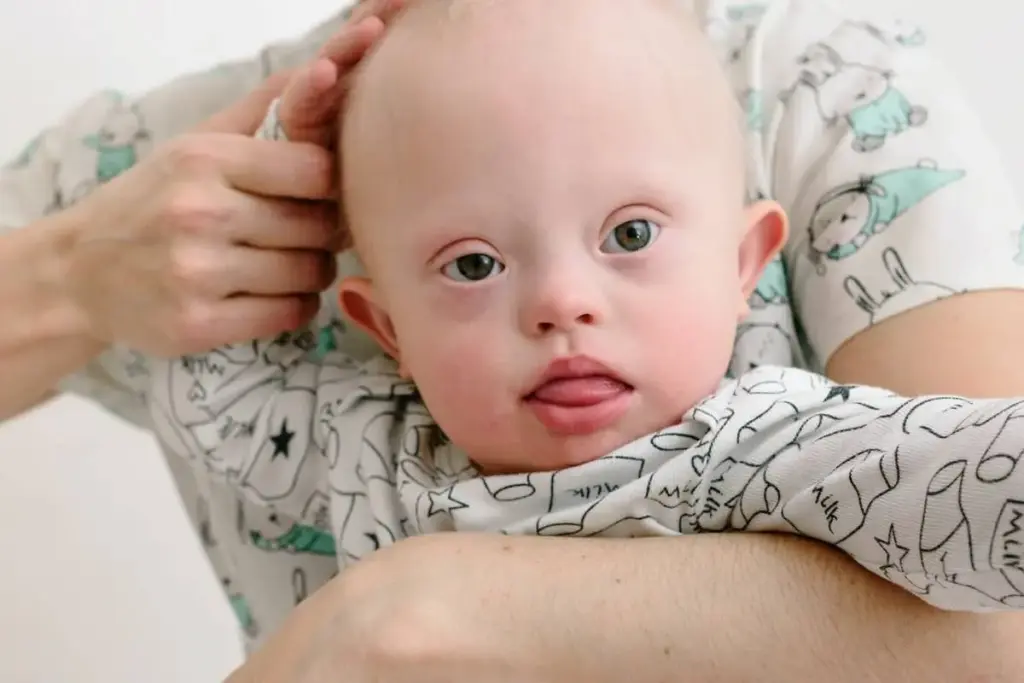
Do you know that our facial functions can sometimes suggest a genetic disease? Ablepharon macrostomia syndrome (AMS) is a rare disorder that can make people have small or no eyelids and a big mouth.
Apert syndrome can make the amniotic sac break early, increasing the risk of issues like premature birth and infection. Noonan syndrome is a genetic disease.
It can cause similar facial features as AMS. These features include wide-set eyes, a droopy mouth, and a prominent forehead. Ablepharon-Macrostomia syndrome (AMS) is a rare genetic disorder where people are born without eyelids and have wide mouths.
Blepharophimosis
Another uncommon genetic ailment is called blepharophimosis, ptosis, and epicanthus inversus syndrome (BPES), which is characterized by small eye openings, drooping eyelids, and folds of pores and skin masking the internal corners of the eyes. People with BPES may produce other facial features, which include a large nasal bridge, low-set ears, and a small mouth.
Barber-Say syndrome
Barber-Say syndrome is a genetic sickness that is just like AMS; however, it also includes extra features such as highbrow incapacity, not-on-time increases, and skeletal abnormalities. People with Barber-Say syndrome may have the absence of eyelids and a wide mouth like those with AMS.
AMS and Barber-Say syndrome are genetic issues because of mutations in unique genes that play a role in the improvement of the face, pores, skin, and different parts of the body. People with Noonan syndrome might also want to take steps to manipulate their symptoms, which include the use of synthetic tears to shield their eyes.
It’s vital to observe that humans with these syndromes could need unique care to guard their eyes from the factors and harm. They may additionally need to wear artificial eyes or protective eyewear.
How are these genetic problems recognized?
The prognosis of those genetic problems is based totally on physical capabilities and medical records, and genetic checking may also be executed to confirm the analysis. Surgery can be used to correct some of the facial functions associated with Barber-Say syndrome, which include the absence of eyelids and a huge mouth.
It’s important to recognize that these genetic situations are uncommon, and the signs and symptoms can range from character to individual. If you have worries about your facial capabilities or your child’s, you must consult a health practitioner or a different healthcare expert.
Rare disorder: Ablepharon-Macrostomia Syndrome (AMS)
Ablepharon-Macrostomia syndrome (AMS) is an uncommon congenital disorder with an incidence of less than 1 in 1 million humans. It is because of a mutation within the TWIST2 gene that was inherited in an autosomal dominant way. AMS is characterized by the complete or partial absence of eyelids (ablepharon) and an abnormally large mouth (macrostomia). People with AMS may also produce other facial abnormalities, including a cleft lip and palate, a low nasal bridge, and small ears.
There is no therapy for AMS; however, remedies can help control the symptoms and improve the quality of life. Treatment options can also encompass surgical treatment to reconstruct the eyelids and mouth, as well as speech therapy and other supportive care.
Ablepharon-Macrostomia Syndrome (AMS) and Mental Health
Ablepharon-Macrostomia Syndrome (AMS) is an uncommon genetic disorder profoundly affecting facial development. Individuals with AMS display underdeveloped or absent eyelids (ablepharon) and an enlarged mouth (macrostomia), often accompanied by various other physical abnormalities affecting their ears, noses, and genitalia.
Living with a rare genetic disorder such as Ablepharon-Macrostomia Syndrome (AMS) can exert a substantial toll on mental health. While research on the specific relationship between AMS and depression is limited, it is crucial to acknowledge the potential psychological challenges that people with this condition may encounter.
Physical Appearance and Self-Esteem
The facial distinctions related to AMS can cause self-cognizance and cultivate a terrible frame picture. Those tormented by AMS might also grapple with vanity problems, struggling with feelings of loneliness and isolation from their friends. These sentiments can pave the way for the improvement of depression.
Social Challenges
People with AMS may come into socially demanding situations because of their exceptional facial capabilities. They may additionally undergo stares, inquiries, or even times of bullying, which could cultivate sentiments of rejection and isolation. These experiences can profoundly affect mental well-being and contribute to the emergence of melancholy.
Emotional Impact
Coping with a chronic situation like AMS may be emotionally taxing. Individuals with AMS may grapple with frustration, unhappiness, or anger associated with their bodily constraints and the need for more than one surgical procedure and medical intervention. These emotional traces can elevate the threat of melancholy.
Support and Coping Strategies
Establishing a strong aid system is pivotal for people with AMS. This network can embody family, friends, and healthcare specialists who appreciate the challenges they face. Seeking professional assistance from psychologists or therapists can provide useful support and coping strategies to manipulate the emotional repercussions of dwelling with AMS.
Building Resilience
Fostering resilience is vital for individuals with AMS as they navigate the emotional limitations they’ll come upon. This machine includes nurturing an extraordinary mindset, carrying out self-care, and collaborating in sports that deliver pride and contentment. Developing resilience can empower people with AMS to deal with the psychological results of their experiences and mitigate the risk of despair.
Advocacy and Awareness
Elevating recognition, approximately AMS, and championing popularity and inclusivity can lower the stigma linked to perceived distinctions. Advocacy endeavors can contribute to a more supportive and empathetic society, which can also surely affect the mental well-being of people with AMS.
Conclusion
While precise research on the correlation between AMS and despair remains restricted, it’s vital to renowned the psychological effects of dwelling with this uncommon genetic disorder. The conspicuous facial differences, social hurdles, and emotional lines associated with AMS can heighten the likelihood of developing depression. Nonetheless, with a strong aid system, powerful coping strategies, resilience cultivation, and heightened focus, people with AMS can lead enjoyable lives and successfully manage their intellectual fitness.
Questions about Ablepharon-macrosomia syndrome (AMS)
What is the prevalence of Ablepharon-Macrostomia Syndrome (AMS)?
Ablepharon-Macrostomia syndrome (AMS) is a very uncommon congenital disorder. The occurrence of AMS is estimated to be much less than 1 in 1 million humans. Only about 16 instances of AMS have been mentioned in the medical literature thus far.
AMS results from a mutation within the TWIST2 gene, which is involved in the development of the face and other parts of the frame. The sickness is inherited in an autosomal dominant way, which means that someone most effectively wishes one reproduction of the mutated gene to broaden AMS.
AMS is characterized by the most important features: ablepharon and macrostomia. Ablepharon is the complete or partial absence of eyelids, while macrostomia is an abnormally big mouth. People with AMS can also have other facial abnormalities, such as a cleft lip and palate, a low nasal bridge, and small ears.
There is no remedy for AMS; however, treatment can help manage the symptoms and enhance the quality of life. Treatment options may additionally include surgical treatment to reconstruct the eyelids and mouth, in addition to speech remedies and other supportive care.
What are the remedy options available for Ablepharon-Macrostomia Syndrome (AMS)?
The treatment alternatives for acute mountain illness (AMS) depend upon the severity of the signs and symptoms and the altitude at which the character is located.
Non-pharmacological treatment:
- Descent: The best remedy for AMS is to descend to a lower altitude. Symptoms generally enhance within 24-forty-eight hours of descent.
- Rest: Avoid strenuous pastimes till symptoms enhance.
- Fluids: Drink lots of fluids to stay hydrated.
- Oxygen therapy: Oxygen therapy can be used to relieve signs and symptoms in patients with severe AMS.
Pharmacological remedy:
- Acetazolamide (Diamox): Acetazolamide is a medicine that could assist in saving you and dealing with AMS. It works by increasing the respiration rate and supporting the frame to excrete extra fluid.
- Dexamethasone: Dexamethasone is a medicinal drug that may be used to deal with excessive-altitude illness and mind swelling at excessive altitudes. It works by reducing inflammation and swelling within the mind.
- Acetazolamide is used to save you and deal with mild AMS, while dexamethasone is used for more excessive instances.
If you’re experiencing signs of AMS, it’s essential to look for clinical attention right now. This is mainly essential if you are at an excessive altitude or if your signs are intense.
Here are some extra tips for preventing Ablepharon-Macrostomia Syndrome (AMS):
- Ascend step by step. Aim to gain no more than 1,000 feet (three hundred meters) per day.
- Acclimatize at a decreased altitude earlier than ascending to higher elevations.
- Stay hydrated. Drink plenty of fluids, especially water and electrolyte drinks.
- Avoid alcohol and tobacco. These substances can dehydrate you and make AMS symptoms worse.
- Listen to your body. If you are experiencing symptoms of AMS, stop ascending and rest.
What is the age range for people with Ablepharon Macrostomia Syndrome (AMS)?
AMS affects people of all ages, but it is most common in adults aged 20 to 60. Moreover, it tends to stand up more frequently in men than in girls.
Nevertheless, there were stated cases of AMS in kids and elderly human beings.
As the focus and popularity of AMS continue to develop, the age variety of affected people will probably extend. This style is specifically applicable because the populace has been around for a long time and an increasing number of humans increase the danger elements for AMS, which include weight troubles, excessive blood pressure, and diabetes.
It is vital to understand that AMS is a spectrum disorder, signifying an extensive range of symptom severity. Some people with AMS have mild symptoms, while others have severe symptoms that greatly affect their daily lives.
If you think you or someone you know might have AMS, it’s really important to find medical help and treatment.



